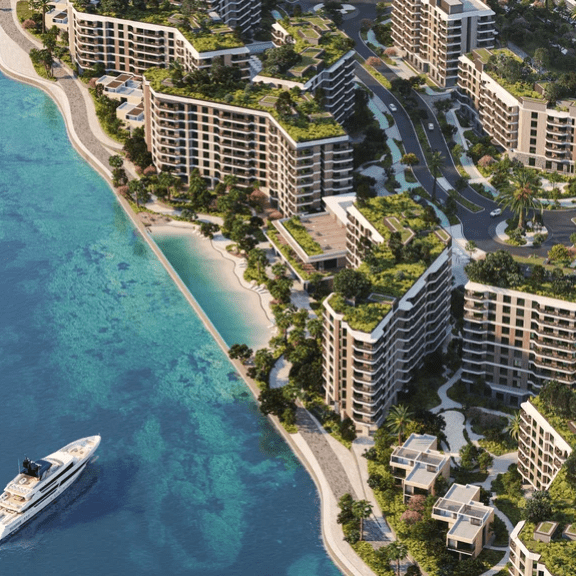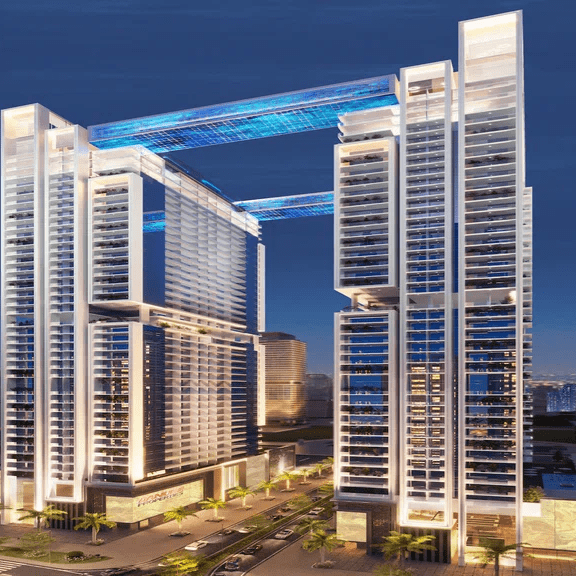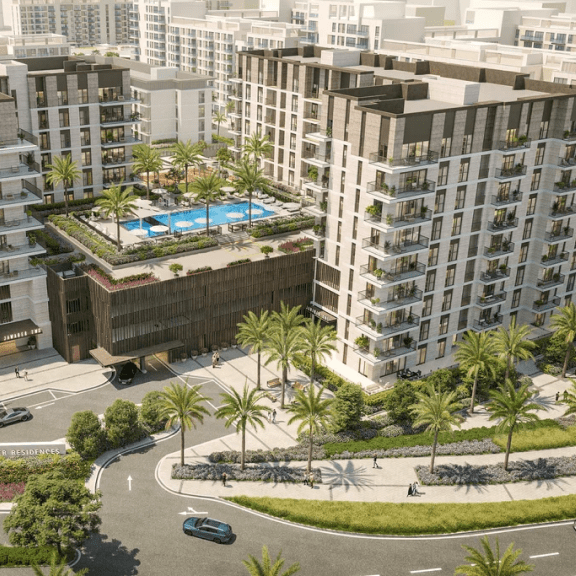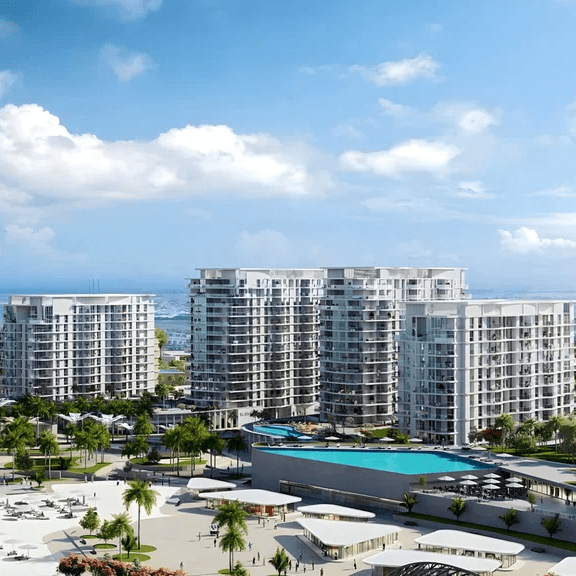Over 50% of expats in the United Arab Emirates are Indians. Today, it is the largest foreign community in Dubai. The total number of Indian expats in the UAE is about 3.5 million people. The group consists of people in various occupations, from service and construction workers to highly-qualified specialists and wealthy businessmen. Dubai is the most expat-friendly city in the UAE and has been popular with Indian expat families for many years. So, what is the best place to live in Dubai for indian families? Read on to find out about the most popular areas among Indian expats.
Downtown Dubai
The perfect residential area for those who value luxury urban life
Average residential real estate prices: from AED 650,000 (USD 177,000) to AED 125 million (USD 34,036,250).
Average rental rates: from AED 50,000 (USD 13,615) to AED 2.45 million (USD 667,110) a year.
Downtown Dubai. Photo: Kent Tupas (Unsplash)
Downtown Dubai is the most popular area not only with tourists, but also with wealthy expats. It hosts the main attractions of Dubai: Burj Khalifa, the world's tallest skyscraper, dancing fountains, the huge Dubai Mall, and Dubai Opera. Rich Indians consider owning a flat or an office in Downtown a symbol of wealth. However, living in Downtown has its disadvantages. It is very noisy almost all the time as every day thousands of tourists come here to shop or dine in expensive restaurants. Besides, Downtown is still developing, so you may risk buying a property that overlooks the construction site of yet another skyscraper, but not the Burj Khalifa or the fountains. The lack of green areas makes Downtown less attractive for families.
New buildings in the UAE
Even so, lots of people still prefer to live here. Wealthy Indian business owners often buy luxury flats in one of the skyscrapers in Downtown to let them out, have additional accommodation or host official meetings in them..
Indians in Burj Khalifa
Interestingly, wealthy Indians really love Burj Khalifa, the record-breaking skyscraper and the main embodiment of Dubai's ambitions. Indians own a number of properties in the world's tallest building. According to the property developer, Indians were the purchasers of about 150 flats in the tower in the first three years of its existence.
Burj Khalifa. Photo: Peter Myers (Flickr)
The leader is George Nereaparambil, an Indian tycoon who owns and lets out 22 of the 900 flats in Burj Khalifa. Bavaguthu Raghuram Shetty, an Indian entrepreneur and owner of the NMC Hospital chain and the UAE Exchange company, owns the entire 100th floor. A Delhi-based lawyer, Rohit Kochhar, has an office on the 1,223rd floor. He says he treats this property as a symbol of success because he can arrange meetings with his clients in such a prestigious place. Indian celebrities and film stars also like to buy properties in Burj Khalifa. The list of owners includes Bollywood actors like Mohanlal, Shilpa Shetty and her husband as well as Raj Kundra, a British-Indian businessman and producer.
Al Furjan
Al Furjan is a neighbourhood of high-end villas and mansions
Average real estate prices: from AED 340,000 (USD 92,580) to AED 83,493,000 (USD 22,743,210).
Average rental rates: from AED 32,000 (USD 8,713) to AED 500,000 (USD 136,145) a year.
Photo: Nakheel Properties
Al Furjan is a combination of an urban area and an upmarket villa community. There are four smaller areas in Al Furjan which offer townhouses and villas for sale. The neighbourhood boasts great facilities, including schools, nurseries, restaurants, shops, sports grounds, swimming pools and spacious parks. That's why Al Furjan could be the best residential area in Dubai for indian families. Another advantage of Al Furjan is good transport accessibility. The area is close to Sheikh Zayed Road which can take you to Dubai International Airport or other popular places in the city in no time. In addition, a metro line runs through Al Furjan, so you can go to Dubai Marina or Downtown on a train.
Dubai Marina
This seashore area is popular with families
Average real estate prices: from AED 450,000 (USD 122,530) to AED 75 million A (USD 20,421,750).
Average rental rates: from AED 35,000 (USD 9,530) to AED 3.3 million (USD 898,557) a year.
Dubai Marina. Photo: Iwona Castiello d'Antonio (Unsplash)
Dubai Marina is one of the city’s most vibrant residential areas. It combines tall skyscrapers, beautiful beaches and promenades with many restaurants. Dubai Marina is also a great attraction of the neighbourhood with lots of yacht berths. You can park them right at the entrance of a residential building. The vast number of entertainment facilities, shopping centres and walking areas along the marina makes the area very popular with families. Moreover, you will find next to Dubai Marina the huge artificial island of Palm Jumeirah with even more beaches and the Aquaventure water park. Dubai Marina also appeals to people working in Dubai Media City as these are neighbouring areas.
Arabian Ranches
Escaping from the city’s hustle and bustle
Average real estate prices: from AED 2,050,000 (USD 558,195) to AED 50 million (USD 13,614,500).
Average rental rates: from AED 135,000 (USD 36,760) to AED 1.7 million (USD 462,893) a year.
Photo: Emaar Properties
Some people often call Arabian Ranches the greenest area of Dubai. This quiet place could be a good choice for indian families seeking a residential area in Dubai. It boasts lots of parks, green lawns, outdoor playgrounds and sports amenities. There are also three lakes: Al Reem Lake, Alma Lake, and Palmera Lake. Together with many pools, they compensate for the lack of sea access in Arabian Ranches.
There are three areas: Arabian Ranches, Arabian Ranches II, and Arabian Ranches III. The latter is still under construction and is scheduled for completion by the end of 2025. All three areas are large villa communities surrounded by gardens and pools. The Arabian Ranches area has been developing since 2004 and now has a wide range of facilities for residents. As well as a football field, tennis court and cycling lanes, it has a shopping centre, golf course and horse-riding club. The only disadvantage is that the area is far from the seashore. It takes about 20 minutes to get to the nearest beach by car.
Deira
The most Asian neighbourhood of Dubai
Average real estate prices: from AED 750,000 (USD 204,217) to AED 6.2 million (USD 1,688,198)
Average rental rates: from AED 15,000 (USD 4,084) to AED 700,000 (USD 190,603) a year
Deira. Photo: Susanne Nilsson (Flikcr)
Deira is one of Dubai’s oldest districts. It used to be the city centre in the "pre-oil" period of UAE’s history. Today Deira is a popular trading area. Most of the local residents come from India or Pakistan and own most of the businesses here. Deira has the cheapest residential properties, but is not the most comfortable place to live. First of all, the Dubai Creek separates Deira from the rest of the city and only five roads connect the area to other parts of Dubai. Secondly, Deira is called “a big market” for a reason. This is the most densely populated and the noisiest district of Dubai. As a result, it is definitely not suitable for a quiet life. However, Deira may appeal if you trade in spices, souvenirs and other goods. The local market already has some oriental features.
Dubai Media City
The perfect spot for young specialists in creative industries
Average real estate prices: from AED 1,745,000 (USD 475,146) to AED 69 million (USD ($18,788,010).
Average rental rates: from AED 145,000 (USD 39,482) to AED 1.2 million (USD 326,748) a year
Dubai Media city. Photo: Francisco Anzola
Dubai Media City is the city's IT development centre. A number of news, advertising agencies and media companies are based here. Foreign investors and media workers tend to choose this neighbourhood to buy flats in skyscrapers. Dubai Media City boasts great work and entertainment facilities. There are lots of restaurants, hotels and other amenities. Although it is business-oriented, Dubai Media City is suitable for families with children. There are several schools here and even more in neighbouring areas. For example, the GEMS Wellington International School with a British curriculum and the International School of Choueifat offering the SABIS curriculum.




